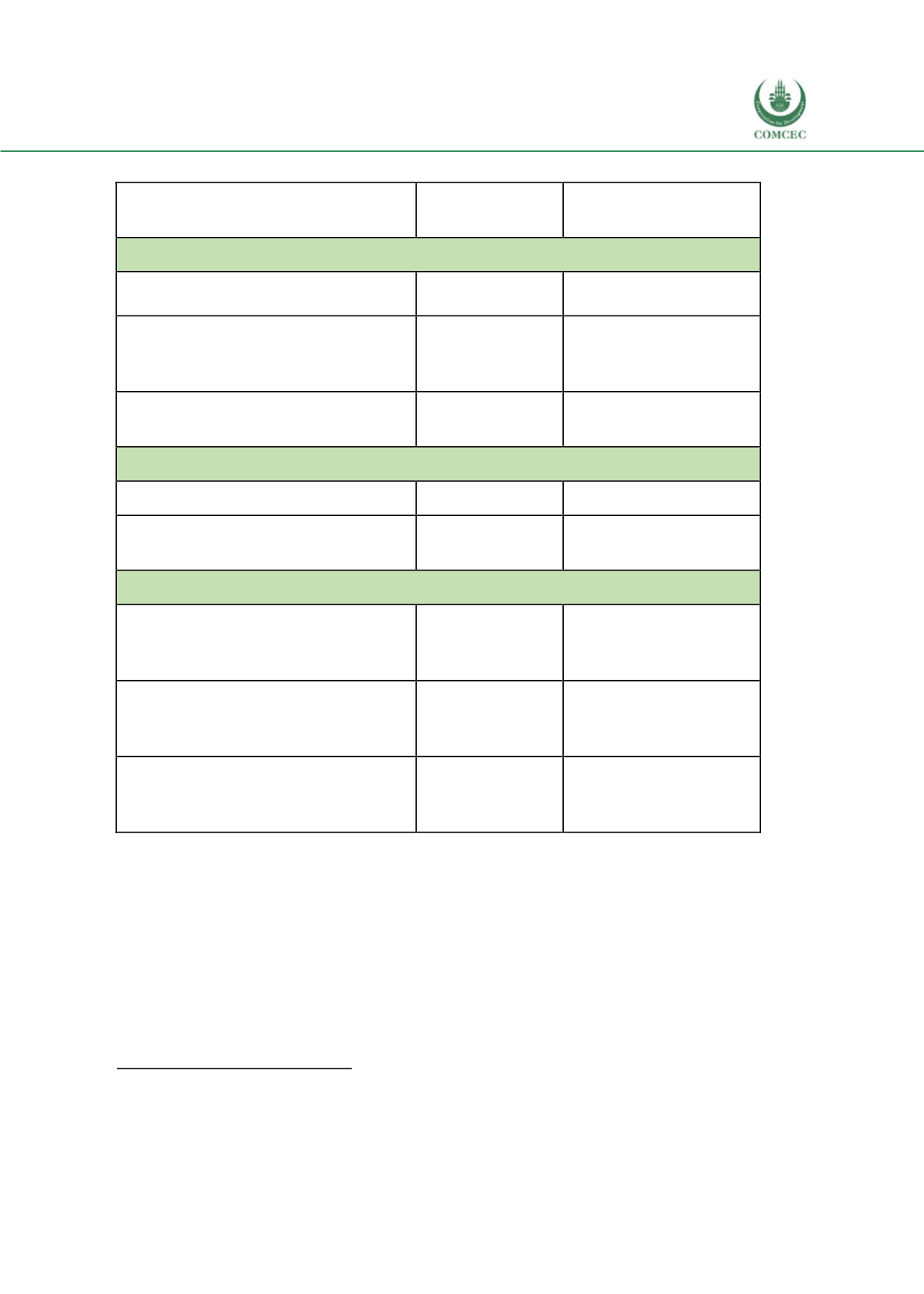

Increasing the Resilience of the Food Systems
In Islamic States in Face of Future Food Crises
85
Table 43: Niger - Summary Metrics
Metrics
Niger
Performance
Global Average
Availability
Average food supply (kcal/ capita/day)
2,547.0
2,866
Volatility of agricultural production
(standard deviation of growth in
production over last 20 years)
0.2
0.1
Food loss (ratio of post-harvest/pre-
consumer losses to total supply)
11.3
5.6
Access
GDP per capita ($ at PPP)
$1,340.0
$22,024
Food consumption as a share of
household expenditure (%)
43.4%
29.5%
Utilization
Diet diversification (share of non-
starchy foods in dietary consumption)
(%)
39.0
52.5
Protein quality (composite score based
on the extent of the presence of nine
amino acids, assessed out of 100)
50.5
58
Access to potable water (% of the
population with access to basic drinking
water)
45.8
86
Source: EIU Global Food Security Index 2018
Food Security Crises
Drought has posed the greatest risk to agricultural production in Niger, diminishing crop yields
and triggering food insecurity. It has also been a leading cause of other risks, such as rising food
prices and hostilities related topastures andwater. Between 2000 and 2012, Niger experienced
four years (2001, 2005, 2010, and 2012) of significant food insecurity
344
that led it to seek
international aid and support. In 2004, drought and locust infestation destroyed up to 100% of
crops in certain areas and left over
3 million people with inadequate nutrition.
345
344
TheWorld Bank. (2013).
Agricultural Sector Risk Assessment In Niger: Moving from Crisis Response to Long-Term Risk
Management.
Retrieved from:
https
:/
/openknowledge.worldbank.org/bitstream/handle/10986/13260/743220ESW0P12900Box374318B00PUBLIC0.pdf345
Niger 2005 Food Crisis. Retrieved from :
https://www.who.int/hac/donorinfo/campaigns/ner/en/















